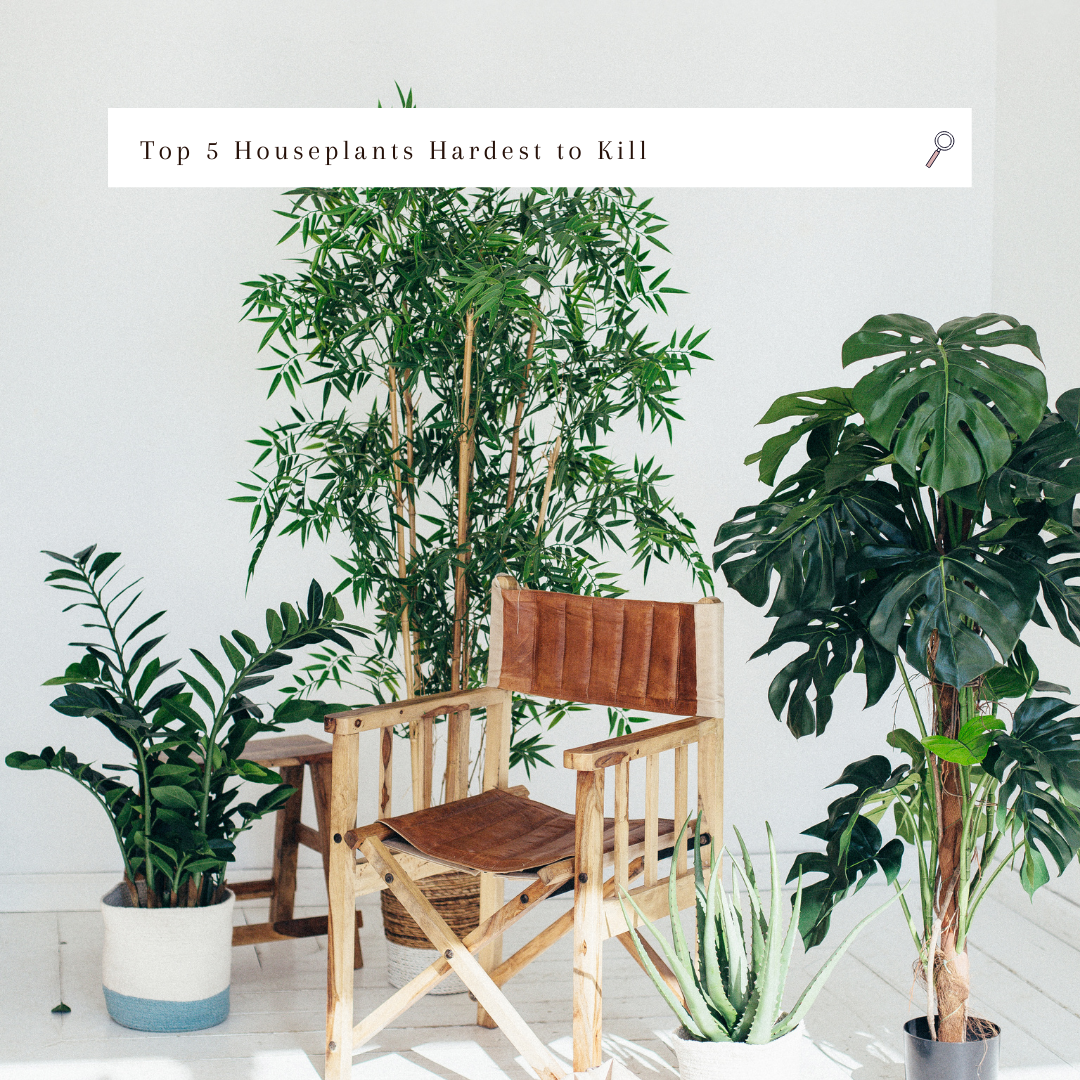In the world of indoor and outdoor plants, no plant is 100% indestructible. However, some potted plants are definitely pickier than others. If you’re looking for an easygoing, low maintenance plant rather than one known for being a drama queen, here are our five best recommendations for the top five beginner friendly and hardy indoor plants!
1. Spider Plant / Chlorophytum Comosum
The Spider Plant is a low-light houseplant with a few hidden bonuses: it’s pet-safe, air purifying, and grows “babies” to cut and propagate!
If the Spider Plant does give you trouble with brown “crispy” leaves, try watering with distilled water rather than from the tap. This usually does the trick!
2. Snake Plant / Sanseviera Trifasciata
The Snake Plant, also called the Sanseviera or Mother in Law’s tongue, is often the poster child of hard-to-kill plants. Based on care needs and benefits alone, it’s easy to see why: cold tolerant, grows in any lighting, absorbs indoor air pollutants, low watering needs, and even grows in multiple colors! It’s no wonder that everyone seems to love having a snake plant growing in their home.
3. ZZ Plant / Zamioculcas Zamiifolia
It’s hard to believe the ZZ Plant isn’t fake, both due to its glossy, artificial-looking leaves and its ability to thrive in any environment. ZZ Plants can tolerate temperature changes, low light, AND low water!
4. Pothos / Epipremnum Aureum
Another fan favorite, the Pothos is a fast-growing vine plant with multiple variations to choose from. Foliage can range from cream, gold, and even neon green colored leaves! Try growing it in a hanging planter with vines that cascade down. If the trails grow too long, just prune your Pothos back and place the cuttings in water to propagate them. If you are curious to learn more about propagation, the Pothos is one of the most beautiful “training wheels” of plants to expand your propagation skillset.
5. Peace Lily / Spathiphyllum
Are you a chronic over-waterer? If so, you aren’t alone, and the Peace Lily won’t complain. Despite many low-light houseplants preferring an infrequent watering schedule, peace lilies appreciate high humidity and moisture retentive soil. Rather than waiting until the soil is bone dry before hydrating, ensure the Peace Lily’s soil does not fully dry out. Find a medium or low-light spot with high humidity (which could mean buying a humidifier or growing your Peace Lily in your bathroom) and they are sure to reward you with sprawling leaves and white flowers.
These recommendations are a great starting point for your first green home edition. If you’re on the fence, just remember that any experienced green thumb has killed a plant (or 20) before! Embrace learning from trial and error, and don’t let the fear of mistakes hold you back from purchasing these five hardy plants immediately!


